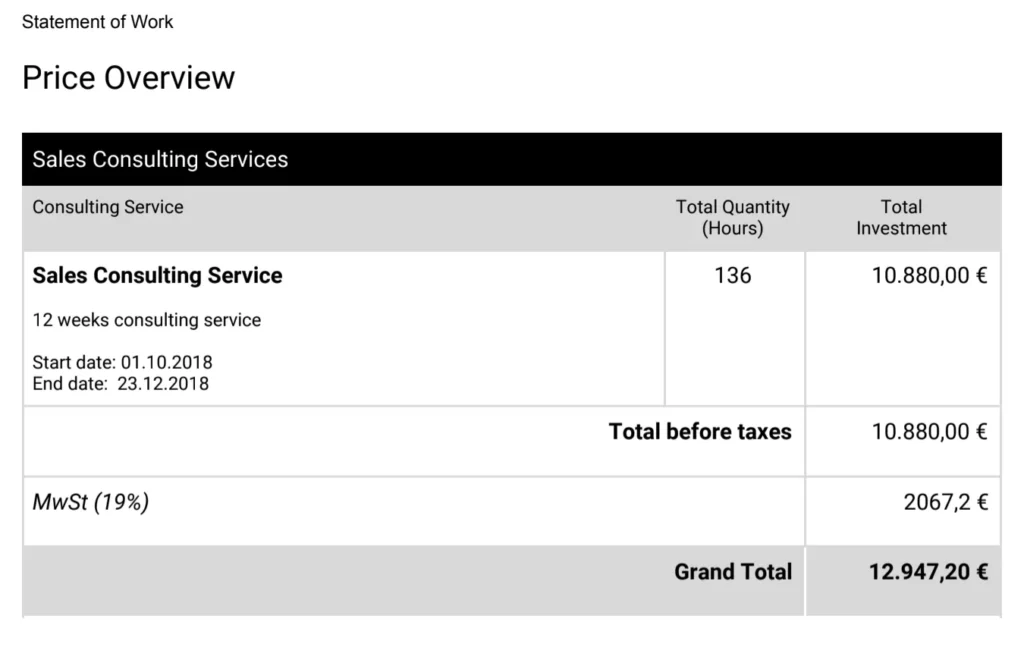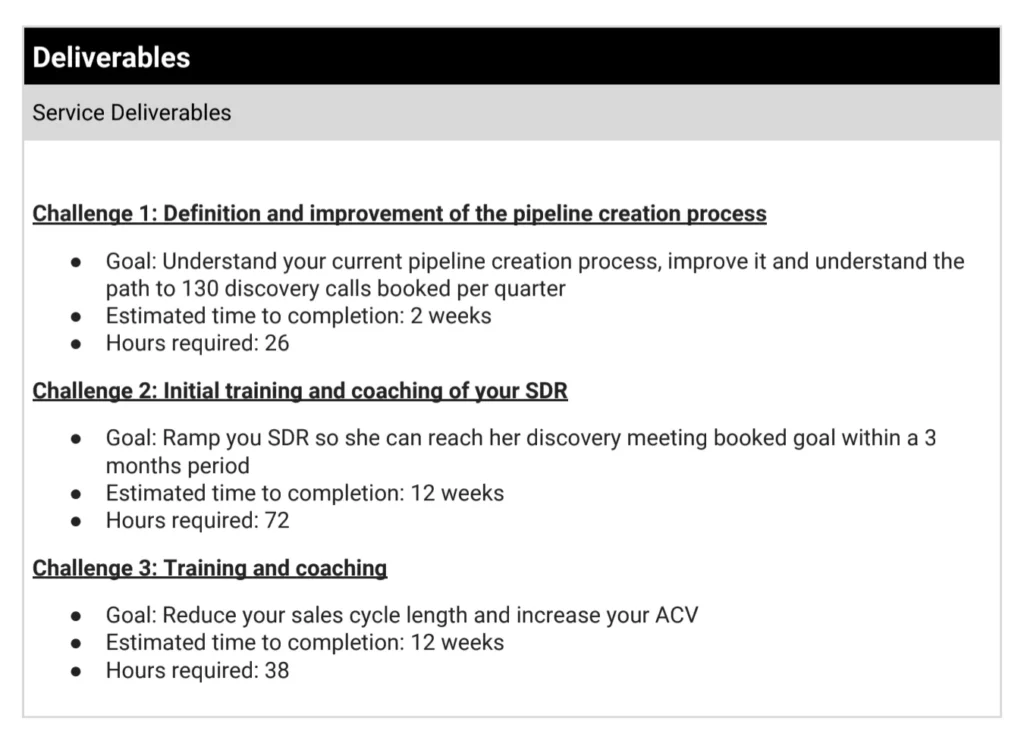Thanks to our sponsor who keeps this newsletter free for the reader:
Today’s newsletter is sponsored by my 7-day email course, Escape The Hamster Wheel. If your end goal is to stop having a boss, work on your own terms, and choose what to do with your time, then this course is your first step. Pre-order it now and find out how to land your first side gig (without leaving your job yet).
In today’s newsletter, I will share the exact system I used to close a €10,000 side gig in 3 weeks. If you can replicate these steps, you will be on your way to stop working for bad bosses and start using your sales skills to build a more independent career.
Here’s how, step-by-step:
If you work in sales, you already have a marketable skill. The ability to schedule meetings, transform them into opportunities, and convert them into business is a highly desirable skill. There are various ways to sell this skill, but here are a few that come to mind:
Once you have finished listing the best way to sell your sales skills, you should determine what resonates with you the most. Personally, when I began working independently, I had little interest in scheduling meetings or closing deals on behalf of other businesses. Instead, I chose to help founders resolve sales process issues, which led me to offer a combination of consulting, training, and coaching services.
Once you have identified the perfect combination of your marketable skills and interest, you can begin contacting your network for introductions. I suggest starting with a list of close friends and colleagues.
These individuals can assist you in generating a list of potential prospects. Some of them may have a direct need for your services, while others may know individuals who need sales assistance (which is super common).
For example, I personally began reaching out to previous customers and asked if they were aware of anyone who could benefit from help with sales.
Now that you have a list of potential prospects, you can begin asking your acquaintances and friends for introductions. You can create two sequences: one to ask your friends for introductions and another to ask for referrals once an introduction has been made.
Here’s an example of a message I sent to my friend Pierre-Yves to ask if he knows anyone who may need assistance with sales:
Pierre-Yves, I’m looking for founders who are having an issue with their sales process. Do you know of anyone who could benefit from a quick conversation to see what’s wrong, and get a few ideas on how to solve these issues?
PS: If you want to get a sequence planner, a few more email templates, and the whole playbook I followed to close my first side gig, then go check my 7-day email course, Escape The Hamster Wheel.
If you execute your sequence correctly, you should have a few discovery calls scheduled. The advantage of not having a clear product to sell is that your discovery call can be completely focused on your prospects and their problems.
Here is a list of questions I asked to understand the problems my prospects were facing:
When you ask these questions, you can learn about your prospect’s business problems and goals. It’s not uncommon for the conversation to last longer than expected, and that’s actually a positive sign.
After running a few discovery calls, you should be able to progress to the next step with at least one prospect. You can propose interviewing employees of your prospect to get a better understanding of their problems and present your findings in a scoping call.
For my first project, I interviewed one of the SDRs from my prospect and identified the following challenges they faced:
Next, we discussed how we could collaborate, defined the deliverables, and established the desired outcomes. Since this was my first consulting project, I opted to sell hours instead of specific outcomes. This approach allowed me to remain flexible and still provide value even if the scope of the project changed.
During the scoping call, you may feel tempted to share your offer. However, I recommend against doing so. Estimating the workload properly may be challenging within the limited time of the call. It is better to build anticipation and keep the offer as a reward for the prospect’s patience.
As Skip Miller would say, your offer is not an educational document, but a validation document. It serves as a natural extension of your discovery call, individual interviews, and scoping call. There should be no major surprises for the prospect.
Here is an example of what mine looked like:


PS: If you want to learn about the payment terms I used, which include a variable part based on performance, sign up for my 7-day email course, Escape The Hamster Wheel.
Finally, after the offer presentation has been performed, you should have a good understanding of the likelihood of closing the deal. At this point, I recommend taking the following steps:
And that’s it. By following these steps, you should be able to close your first side gig relatively quickly. It may take more than 3 weeks, but if you stay persistent, you will find someone other than your boss to pay for your skills.
And if you can do it for one customer, you can do it for two, for three, and soon enough, you’ll be able to go full-time on your own. That’s how I got started, and it’s already been 6 years since I started working on my own.
If you want to go further and create a solid plan to close your first side gig, then check out my 7-day email course, Escape The Hamster Wheel. If you pre-order before the 16th of October 2023, I’ll include a free 30-minute 1:1 coaching call so we can work on getting your first side gig together.
Hope this helps.
Cheers,
Thibaut Souyris
P.S. When you’re ready, here are 5 ways I can help you:
→ Write cold messages that get a 38% reply rate and 27% meeting rate here (75+ students)
Get my free, 4 min weekly newsletter. Used by 5.900+ salespeople to book more meetings and work when, where, and how they want.
Get my free, 4 min weekly newsletter. Used by 5.900+ salespeople to book more meetings and work when, where, and how they want.
I will never spam you, or sell your info.
Get each episode in your mailbox when they release. Grab special discounts and offers.